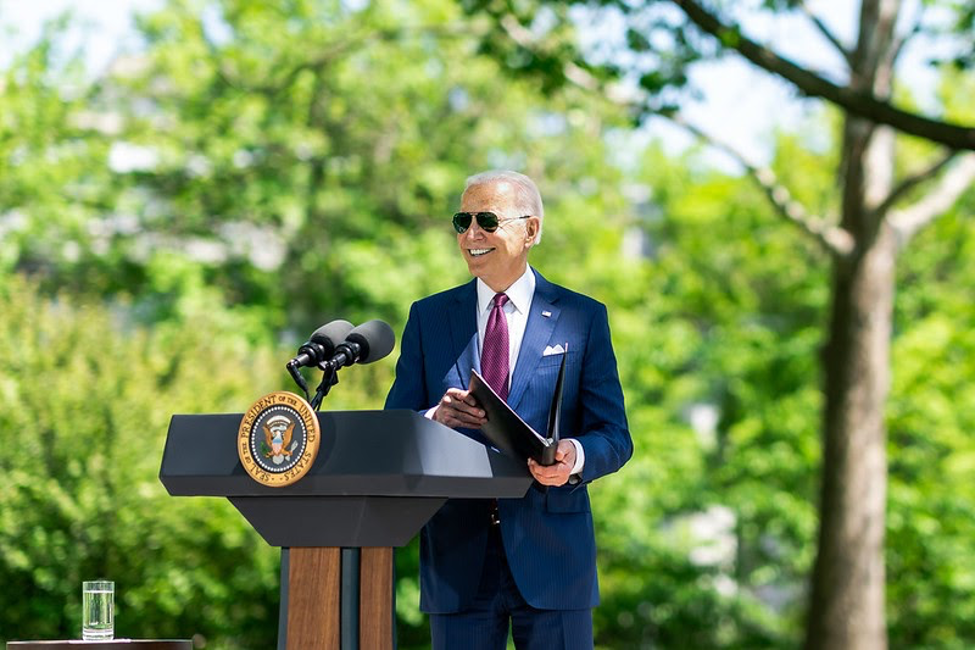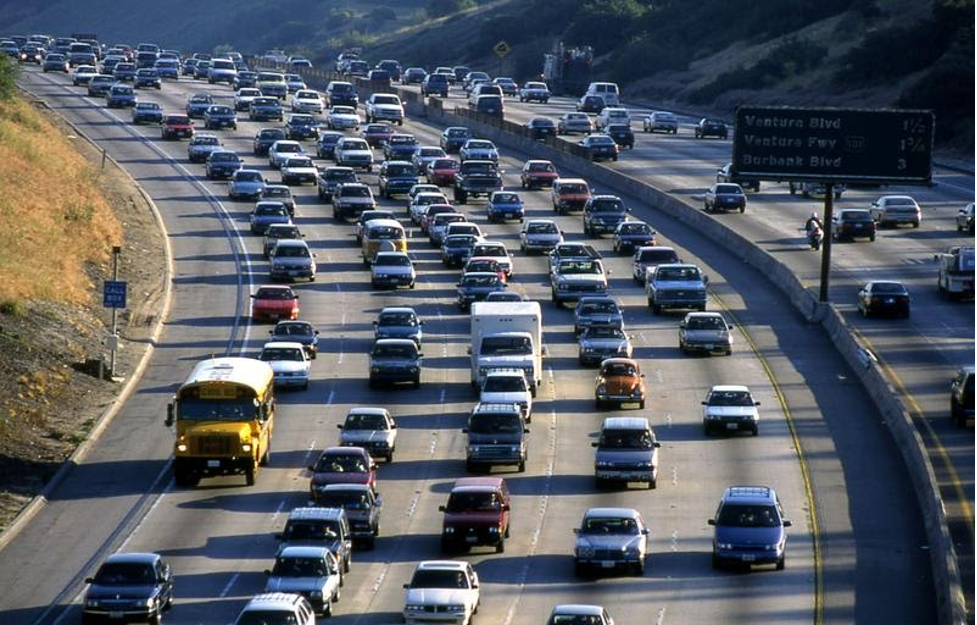
While Congress controls the discussion on transportation reauthorization, President Biden’s team has a wealth of opportunity to make bold administrative changes to reform transportation policy. The President and Secretary Buttigieg continue to talk about the importance of transportation in building a stronger and more equitable economy, but they are still moving slowly six months in.
In November 2020, along with Smart Growth America, Transportation for America sent the incoming Biden administration a memo outlining executive actions and long-term legislation which we urged the new president to initiate, including a list of executive and administrative actions on transportation, many of which could be taken in the first 100 days. We also recapped Biden’s action on transportation within his first 100 days.
Six months in, however, there has been marginal movement from the Biden administration towards real actions in transportation since our last recap, with only actions towards opening a national conversation on equity in transportation in the last few weeks.
The Good: Steps Forward on Emissions, Roadway Design, and Equity

In early June, the US Department of Transportation announced their spring regulatory agenda, which sets the direction for planned administrative actions by the department. Within that agenda, there were three key items of particular attention for Transportation for America:
GHG Emissions Performance Measure: Abandoned by the Trump Administration, the USDOT noted it plans to bring back the greenhouse gas (GHG) performance measure for state and metropolitan planning that was canceled by the Trump administration. This is a HUGE step forward towards climate change. This measure will require states and regions to think long and hard about their transportation investment choices and their implications on the environment and climate.
Revising the Manual of Uniform Traffic Control Devices: After an extended public comment period that closed in late May yielding thousands of public comments, plus garnering the attention of Congress within the reauthorization process on this topic, the leadership at USDOT has indicated they plan to take up revising the outdated, vehicle centric MUTCD. The Department must focus their efforts on making roadway design work for people, the diverse modes they take to move, and their safe movement through the transportation system. Too many people have died on America’s roadways, especially Black and brown people, for the sake of the “need” for vehicle speed. Enough is enough! Let’s make real changes in America’s transportation landscape to work for people.
National Conversation on Transportation Equity: On May 25, 2021, the USDOT opened up a request for information aimed at addressing inequity in transportation that closes on July 22nd. The questions they prepared are centered around methods and assessment tools, data considerations, and transportation workforce diversity. This is a great start to redress equity in the transportation program. Realizing benefits equitably for all users of the transportation system will involve a fundamental adjustment to the state of the practice. With purpose and needs statements, scoping guidance, design measures and standards, project prioritization, and performance indicators, there needs to be a focus of people underpinning the transportation program. None of these steps require authorization from Congress—they simply require USDOT to update its own approach and directives. We look forward to seeing the department’s next steps on formulating a Transportation Equity Plan from this information gathered.
To be clear, each of these three steps forward is positive movement. However, there is a lot left to be done to turn these steps into real actions that will make the transportation system more climate friendly, safe and equitable. We will be monitoring USDOT to see if they see this work through.
The Incomplete: Not Much Action on Transportation
While Congress continues to debate on the future direction of transportation via reauthorization, the Biden Administration isn’t held back from taking big, bold administrative actions. However, the past few months have just been talk without much action to back those speeches up. Our tracker still shows that the Administration is empowered to make big changes to policy that have huge ramifications to the direction and implementation of transportation in America.
| Issue area | Department | Status | Action |
|---|---|---|---|
| Access to federal funds | USDOT | Simplify applications for discretionary grant programs (like the Better Utilizing Investments to Leverage Development (BUILD) program) by creating an online application and benefit-cost analysis (BCA) process so that small, rural and limited-capacity agencies can more easily access federal funds. | |
| Climate change | USDOT | Started rulemaking | We only measure what we treasure. Re-establish the greenhouse gas (GHG) performance measure for transportation abandoned by the last administration, follow this up with annual state GHG rankings, and provide guidance for projecting GHG emissions at the project level. |
| Climate change | USDOT | Done | Repeal the June 29, 2018, Federal Transit Administration (FTA) Dear Colleague to public transit agencies regarding the Capital Investment Grant program, specifically the treatment of federal loans as not part of the local match, inclusion of a geographic diversity factor in grant awards, and encouraging a low federal cost share. |
| Climate change | USDOT | Allow rural transit systems to receive funding from the Low and No Emission bus program. | |
| Equity | USDOT | Identify infrastructure that creates barriers to mobility (such as highways or rail beds that divide a community). Then prioritize resources to address those barriers and the disparities they create (e.g., by removing infrastructure barriers or creating new connectivity). | |
| Passenger rail | White House, USDOT | Review the Amtrak Board of Directors and assess the balance of the board with respect to support for and experience with vital long distance, state-supported, and Northeast Corridor routes, as well as civic and elected leaders from local communities actually served by the existing network. | |
| Safety | USDOT | Revise the New Car Assessment Program to consider and prioritize the risk that increasingly larger automobile designs pose to pedestrians and cyclists and the driver’s ability to see pedestrians (particularly children and people using wheelchairs and other assistive devices.) | |
| Safety | USDOT | Comment period extended | Reopen the comment period on the handbook of street engineering standards (the Manual on Uniform Traffic Control Devices or MUTCD) used by transportation agencies to design streets, and reframe and rewrite it to remove standards and guidance that lead to streets that are hostile to or dangerous for those outside of a vehicle. |
| Technical guidance | White House, HUD, USDOT, GSA | Re-activate the Location Affordability Portal created by DOT and HUD and establish a location efficiency and equitable development scoring criteria to be applied to decisions involving location of new federal facilities, particularly those that serve the public. | |
| Update modeling to achieve desired outcomes | USDOT | Improve traffic projections used to justify projects by issuing guidance requiring the measurement of induced demand and a review of the accuracy of current travel demand models by comparing past projections with actual outcomes, reporting their findings, and updating the models when there are discrepancies. | |
| Update modeling to achieve desired outcomes | USDOT | Push states and metro areas to stop assuming that time savings automatically accrue due to faster vehicle speeds by updating the guidance on the value of time and instead start considering actual projected time savings for a whole trip. |
The Opportunity: Induced Demand

If there is one target area that the Administration can make a particularly big pivotal change in the transportation program in America, it is tackling head-on the concept of induced demand. The quick and short of induced demand boils down to the saying “If you build it, they will come.”. Time and again, planners and engineers pitch roadway widenings and new roadways to alleviate congestion and then are flabbergasted that traffic only got worse after said widenings and new roads opened. It doesn’t help that the USDOT has remained mum on the topic for years, with its last statement on the topic in 2003 in essence recognizing that induced demand does exist as a concept, but not to worry about it since it’s already accounted for in travel demand models.
The problem with that mentality is that travel demand models are just tools used to better understand our transportation system, but are not infallible (think garbage in, garbage out with data for travel demand models). Travel demand models have limited, rudimentary assumptions for induced demand at best incorporated within them, as the exception, not the rule. Furthermore, why is USDOT valuing benefits of roadway expansion projects (like value of time) when such benefits (1 can’t be easily measured, and (2 deteriorate so much faster than advertised?
California has begun accounting for induced demand in transportation planning, but that’s pretty much the extent of induced demand in transportation planning in the United States. USDOT needs to step in and provide leadership at a national scale. This has ramifications on the transportation agenda and influencing climate change, roadway safety, placemaking, and multimodal investment strategies. The House INVEST Act and the Senate’s Highway title both recognize the need to account for induced demand in transportation planning. Now it’s high time for the USDOT to step up and provide the necessary leadership and guidance to states, regions, and localities on truly tackling induced demand.
The post Six months in—how has Biden done with transportation? appeared first on Transportation For America.











